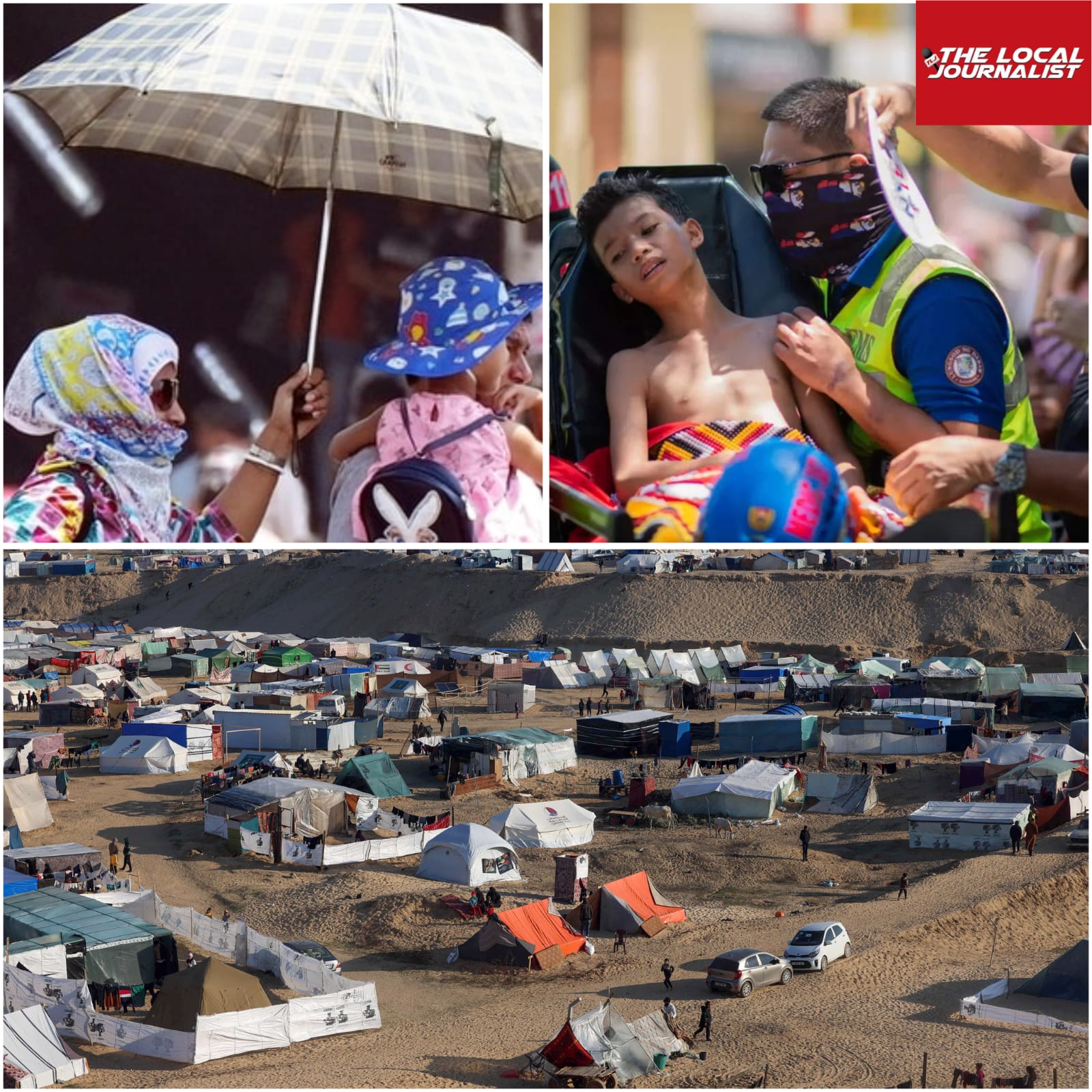
Over the past few weeks, hundreds of millions of people have been suffering in record-breaking temperatures above 40 degrees Celsius (104 degrees Fahrenheit) across a large portion of Asia due to extreme heat. The intense heat has resulted in numerous deaths, destroyed crops, and forced the closure of thousands of schools, spanning from the Palestinian territories in the west to India, Thailand, and the Philippines in the east. The already dangerous circumstances for people residing in makeshift homes and refugee camps in crowded cities have been made worse by constant heat waves. Furthermore, a new analysis reveals that the global warming of 1.2 degrees Celsius that has already occurred has dramatically increased the severity of such occurrences.
According to Mariam Zachariah, the lead author of the new study and a researcher at Imperial College London’s Grantham Institute–Climate Change and the Environment, “if you don’t do anything to stop burning fossil fuels,” the trend of increasingly severe and frequent heat extremes will only continue in these and other places.
An worldwide group of academics known as World Weather Attribution (WWA) carried out the investigation. WWA looks for signs of climate change in extreme weather events using peer-reviewed techniques. The scientists compare the intensity and frequency of extreme occurrences in the current real-world climate with those in two future scenarios using computer models and trends in historical temperature data. In one, a future with ongoing warming was depicted, while in the other, a world devoid of climate change brought on by humans.
The group concentrated on three regions: “Southeast Asia,” which included the Philippines; “West Asia,” which included the Gaza Strip, the West Bank, Israel, Lebanon, Syria, and Jordan; and “South Asia,” which included, according to the team’s study, India, Bangladesh, Vietnam, and Thailand.
The study discovered that because of human-caused climate change, the likelihood of this year’s April heatwaves in South Asia was almost 45 times higher and the temperature was 0.85 degrees Celsius higher. The temperature data trends for this year were consistent with the findings of two previous studies that the researchers conducted in the same general area in 2022 and 2023. Zachariah remarks, “this keeps happening every year.”
The researchers examined a 15-day heatwave that occurred in the Philippines at the end of April. Even though this is the archipelago’s regular hottest time of year, the researchers discovered that climate change, which caused this specific heat wave to be 1.2 degrees Celsius higher, is what made an event of this scale possible. El Nino this year, which added an extra 0.2 degree C, also had a noticeable effect.
Temperatures in West Asia typically peak later in the summer, following seasonal weather patterns more similar to those of much of Europe and North America, thus the three days in late April when they exceeded 40 degrees Celsius were uncommon. According to the team’s data, the April heat wave was 1.7 degrees Celsius hotter and five times more likely as a result of climate change.
People are severely affected by this heat, especially the displaced and underprivileged communities who have very little means of coping. According to Zachariah, who has relations in India, family members “talked about how hard it was to get things done” in the “scorching heat”; nevertheless, they have access to decent accommodation, something that many others in the area have not. The heat caused thousands of schools in South and Southeast Asia to close for portions of April and May; according to scholars, this can increase the educational divide between families with higher incomes and those with lower incomes. Many people who labor outside, like truck drivers, farmers, and construction workers, are at risk for health problems due to the heat, which may also lower their pay.
The majority of Gaza’s 1.7 million displaced Palestinians reside in tents, which have a tendency to retain heat. The extreme heat makes the already severe health conditions and drinking water shortages worse. In addition to Israel’s shelling of hospitals and other care facilities, many people in the region are suffering from starvation.
The concentration of greenhouse gases in the atmosphere is still rising (the amount of carbon dioxide in the atmosphere increased by a record amount in the last year), thus future events with the same meteorological conditions will be much more severe. Heat waves, such as the one that occurred recently in West Asia, would double in frequency and heated by an additional degree for every two degrees Celsius of global warming. The Philippines would see five times as much heat and a 0.7 degree Celsius increase in temperature.
“The climate will warm and vulnerable people will continue to die if humans continue to burn fossil fuels,” stated Friederike Otto, co-author of the new analysis and climate scientist at Imperial College London’s Grantham Institute–Climate Change and the Environment, in a recent press release.
Many areas, including parts of India and Bangladesh, “will soon reach unlivable conditions,” Zachariah says.
The results highlight the need for both a swift phase-out of fossil fuels and improved infrastructure and policies to support people in adjusting to the harm already done. For instance, the report notes that workers require obligatory protections like rest-shade-rehydrate programs, even though India has a strong action plan to alert people to high heat and educate them on what steps to take to survive. Zachariah says, “we shouldn’t concentrate just on the numbers we report.” “It is also crucial to take into account the importance of these figures”.
Read more :- https://thelocaljournalist.com/atlantic-hurricane-season-2024-forecasts-storm-names-and-advisories-from-experts/
